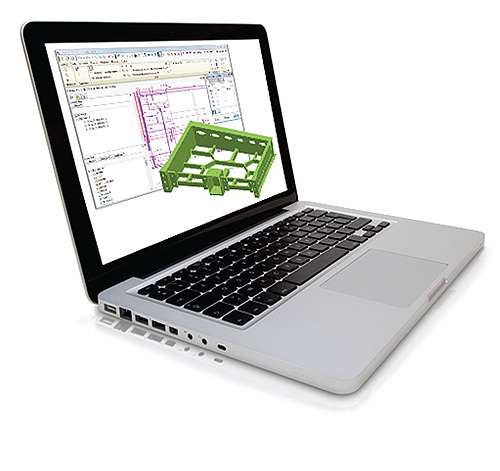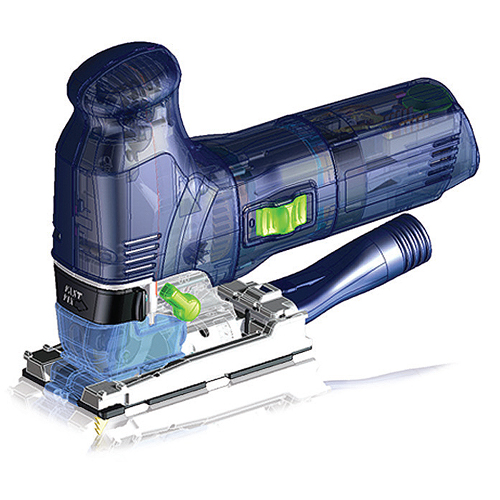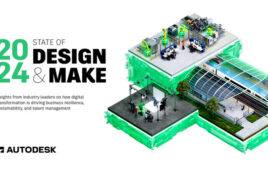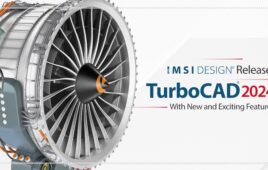Here are a few reasons why combining parametric and direct CAD offer benefits to you, your team, and the products you create.
There are a few differences between parametric and direct modeling. The parametric paradigm provides an “engineer it” approach to design which requires you to anticipate and define feature constraints, relations, and dependencies to ensure that any design modification will update all related downstream geometry in a predefined way.

Direct modeling tools enable CAE and FEA experts to quickly prepare their 3D models for analysis and optimization.
Direct modeling, on the other hand, provides a “just do it” modeling strategy that gives you the power to quickly define and capture geometry. You focus on creating geometry rather than building features, constraints, and design intent into your models.
Hence the direct modeling method is all about quickness and responsiveness to change, making a strategy for design tasks where speed and flexibility are key. Parametric modeling is better suited to those jobs where the designer is given strict criteria to meet exacting design aesthetics, performance metrics, and manufacturing criteria. The added effort and upfront planning is justified to deliver these downstream benefits.
Concept design
Industrial designers are often involved in concept design during product development. They do not need the powerful parametric 3D CAD tools. Instead, industrial designers must quickly produce multiple concept designs of the future product and discuss the concepts with customers and colleagues.

Concept design requires speed and flexibility in order to enable creativity and innovation.
The optimal CAD solution at this stage must support the rapid creation and ideation of geometry. If the user is forced to think about how to use the 3D CAD too, creativity slows down and innovation suffers.
Bid and proposal process
In the bid and proposal process, a customer is offering the opportunity to win business. The competitive bid process requires each supplier to submit their proposal within the specified period – so the process is time-sensitive. Once submitted the bids are reviewed and the supplier is eventually selected based on their overall price point and ability to communicate and demonstrate value. The better or more accurate the geometry, the better chance of securing the new business.
Here, the ideal CAD solution will support the bid process by allowing geometry to be quickly created to minimize the time and costs required to create the bid geometry. Generally, parametric tools lack the ease-of-use, speed, and modeling flexibility required to define throw-away bid geometry, which makes direct modeling a better choice.
Digital prototyping
Digital prototypes are frequently created to support the detailed design phase of product development to demonstrate and evaluate design alternatives. The objective is typically to assess design feasibility. Digital prototyping is best supported by a CAD tool that is easy to use, intuitive, and interactive enough to support innovation and the brainstorming process.
With digital prototyping, the ideal CAD system should make it easy to reuse and repurpose existing geometry. Rather than re-creating digital prototypes from scratch, it is more advantageous to use carry-over or legacy data as the base geometry to quickly create digital prototypes. Thus, the direct modeling approach is better suited to meeting digital prototyping requirements by providing history-free, geometry-based creating and editing.
2D design and conversion to 3D
Two dimensional design capabilities are often required to support concept design and the creation of engineering deliverables. The simplicity of 2D design supports fast conceptual design and layout detailing.
The ideal 2D CAD solution must provide comprehensive 2D design capabilities and support the 2D to 3D model conversion process. To support downstream deliverables, the optimal 2D CAD package should be integrated with the 3D CAD system to accelerate the 2D to 3D conversion process, thus leveraging the ability to directly use 2D information to create 3D models. Here, the direct modeling approach is a good complement to parametric modeling because it provides integral 2D and 3D capabilities to support fast 2D to 3D model conversions.
Reuse legacy data
For many organizations, the need to support legacy data is an ongoing effort that presents a variety of challenges resulting from the need to maintain and carry over legacy information to support current and future programs.
Here, the best CAD option must provide the capabilities to leverage, maintain, edit, reuse, and repurpose legacy data to support current and future programs. The challenges in reusing legacy data usually result from using multiple parametric CAD products and their inability to work with native and non-native legacy data. Also, with parametric modeling, the geometry is generally imported as a “dumb” entity, which means the user has few options to edit the data. Direct modeling enables you to leverage legacy data, and repurpose and modify it just as if had been created inside the direct modeling CAD application.

Direct modeling makes it easy to design concepts in 2D and leverage and transform them into 3D designs.
Interoperability and data exchange
Interoperability and data exchange are critical to ensure that organizations can leverage the extended enterprise and communicate and share the complete range of engineering deliverables with suppliers, vendors, and partners. The CAD solution should make it easy to integrate non-native data into the design process, thereby providing opportunities to reduce effort and duplication.
The challenges surrounding data reuse and interoperability are often the result of designers working with multiple parametric CAD systems, which are unable to work with native and non-native legacy data. Too often, geometry is imported as a “dumb” entity and the user has few options to edit the data. Direct modeling lets you leverage legacy data so you repurpose and modify the data as if it had been created inside the direct modeling CAD application.
Late stage design changes
In many industries, late-stage design changes are common and unpredictable, and yet they must be addressed in a timely and efficient manner. The goal of the 3D system is to promote creativity and innovation, while leveraging the ability to react and implement change at all stages of the product development process.
The optimal CAD system must also support fast creation and editing of geometry. The inability to address rapid turnaround late in the process can severely impact production schedules and product success. Unlike the parametric modeling paradigm that supports prescriptive and predefined changes as defined by the design intent, the direct modeling method supports the ability to implement radical and unexpected changes.
CAE and FEA workflow
CAE is leveraged early in the design and development process to validate and improve the structural integrity and performance of engineering designs. The objective here is to speed the time it takes to analyze CAD geometry and provide engineering feedback.
Analysts will often prepare the CAD geometry for analysis to improve the speed and accuracy of results. Initially, analysts will assess the overall geometry and de-feature CAD models to remove unnecessary features. As a rule, analysts are not CAD experts and do not spend their time performing CAD or design work.
The direct modeling method is best suited to the needs of analysts working with legacy data and heterogeneous CAD data. The geometry-based approach eliminates the need to access feature-level information to implement design changes. Analysts can easily edit, modify, and repurpose data from any CAD source.
Creating downstream deliverables
There is a range of downstream deliverables that must be created to support product development and product lifecycle. These deliverables ensure that the product can be properly manufactured, supported, and serviced. Typical deliverables include CAD illustrations required for service manuals and spare-parts catalogs. As well, fixtures and jigs must be created to support inspection and machining processes. Fortunately, the majority of end-deliverables do not require the downstream user to create complex CAD geometry, but only to reference and use the CAD information.
The ideal CAD product for creating downstream deliverables is one that provides the proper level of usability to allow casual and non-CAD users to create their end-deliverables. In addition to ease of use, the appropriate CAD system must make it easy to work with data from any CAD source.
The direct modeling approach provides the ease of use and modeling flexibility required to define the complete range of end deliverables. Its history-free, geometry-based modeling supports heterogeneous data and the need to implement unexpected and radical changes. Users can leverage a geometry-based approach to edit, modify, and repurpose CAD geometry with ease.
Design reviews
Design reviews are required so that cross-functional team members can review the status of key engineering deliverables and program milestones. In addition to reviewing design activities and the team’s progress, the design review process is an opportunity to leverage the collective knowledge and expertise of the team in troubleshooting and solving engineering challenges.
To improve the efficiency and effectiveness of the design review, the CAD solution must offer designers the speed and flexibility to create and manipulate geometry on-the-fly. By leveraging the proper CAD solution, you can eliminate or reduce the need to schedule follow up meetings.
To speed the design review process, it is often necessary to edit, reuse, and repurpose CAD geometry to demonstrate design alternatives. Direct modeling capabilities provide the maximum flexibility by ensuring that any data can be edited, modified, or repurposed to quickly mock up geometry that represents a new product configuration or an alternative to be evaluated.
Discuss this on The Engineering Exchange:

PTC
www.ptc.com
Filed Under: Software • 3D CAD, Digital manufacturing, Software • FEA, Software • simulation, ENGINEERING SOFTWARE





Tell Us What You Think!